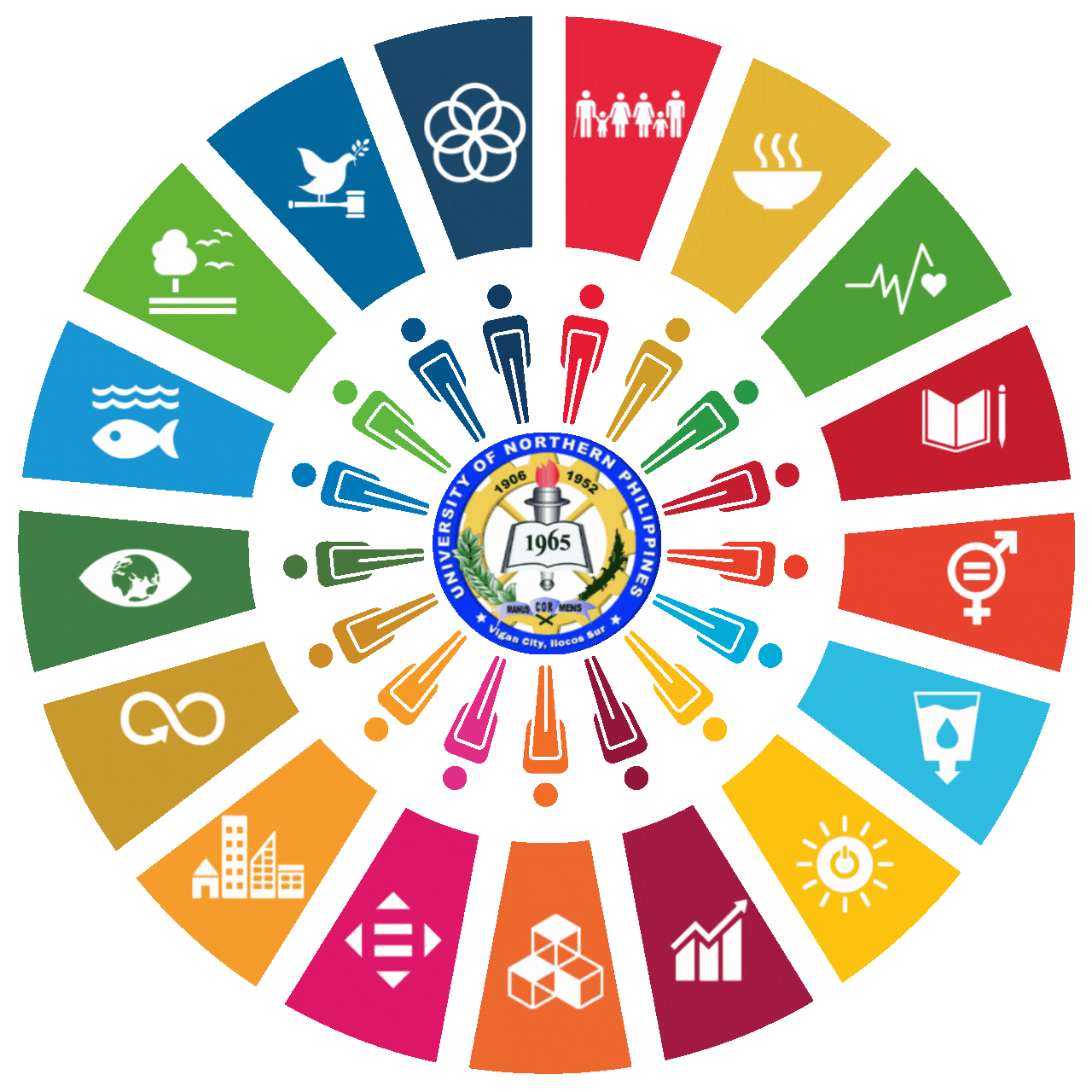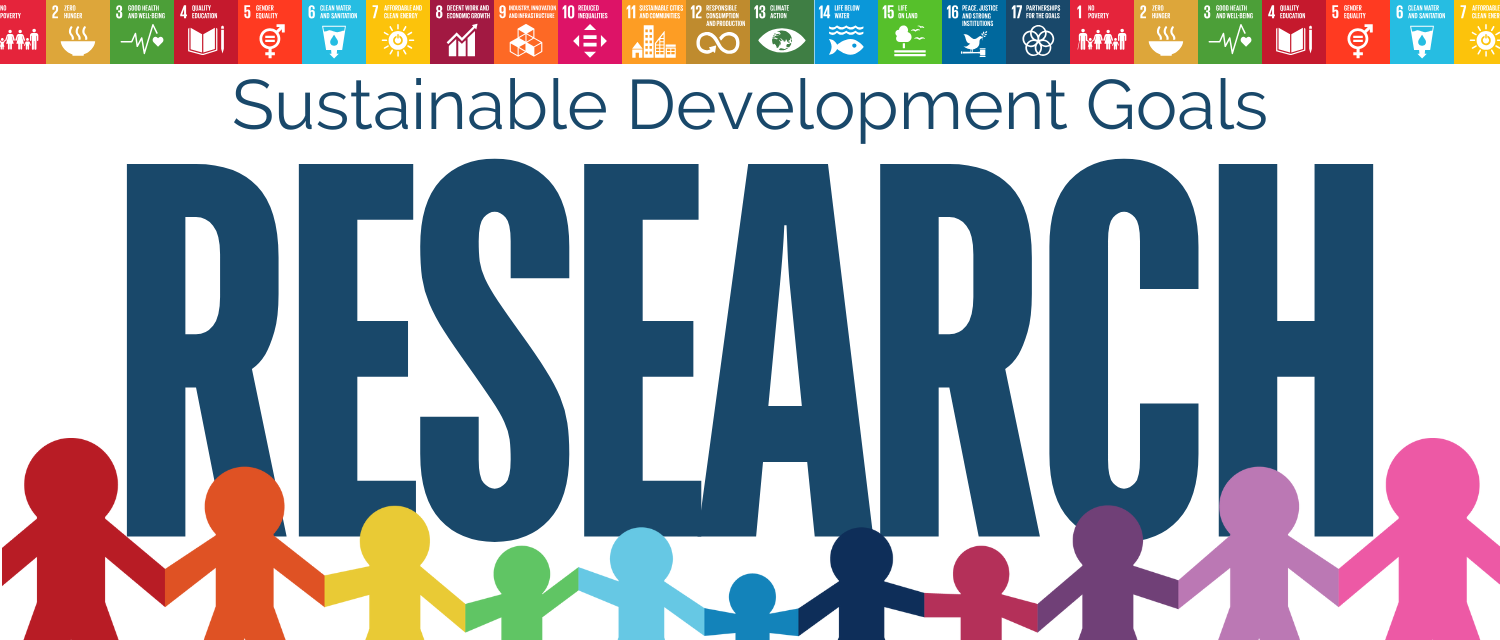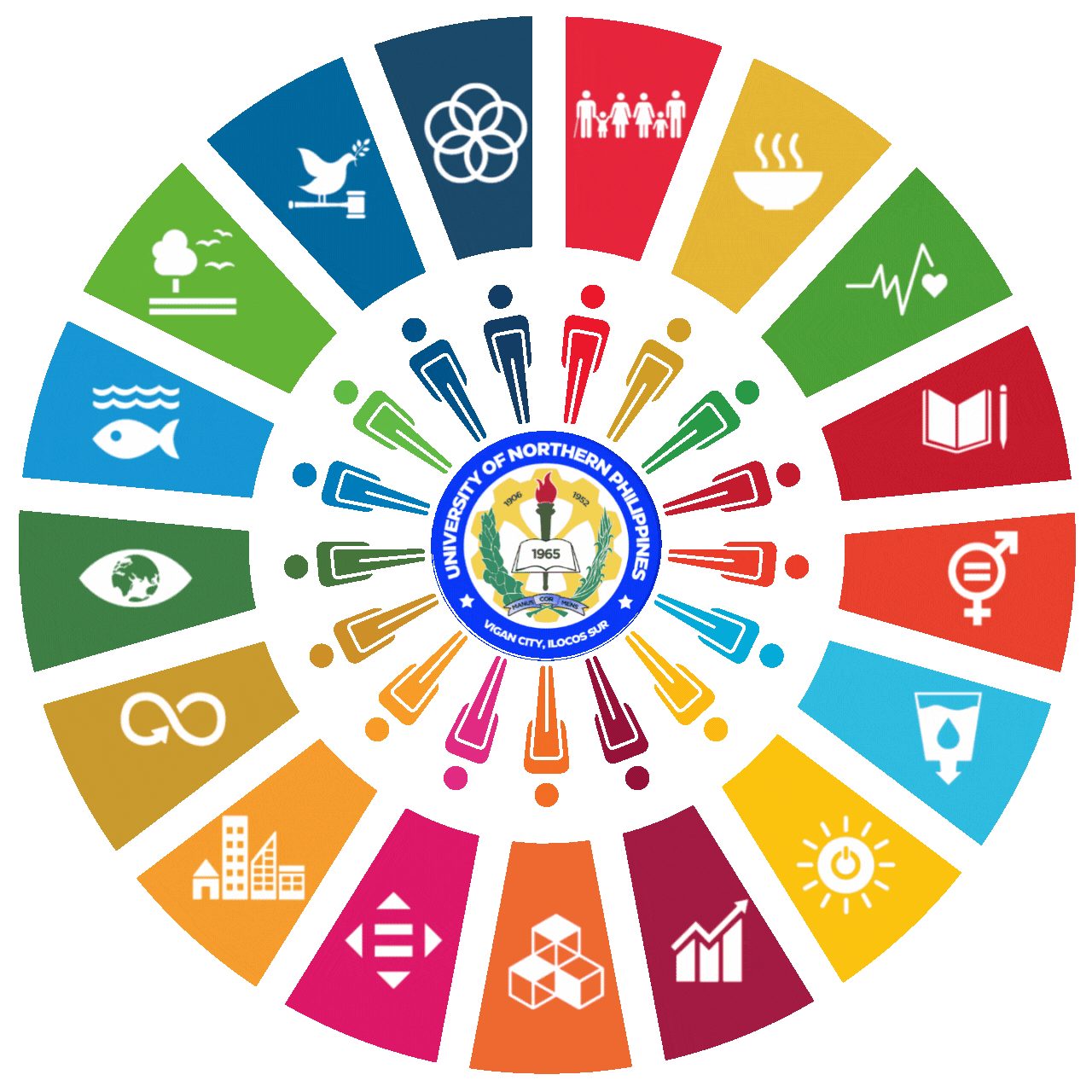
UNP Sustainability
Development Goals


SDG 1 - NO POVERTY
The University of Northern Philippines (UNP) demonstrates a strong commitment to Sustainable Development Goal 1: No Poverty through its comprehensive approach to education, research, and community engagement.
When Freedom Is Regained: The Life Experiences Of Persons Deprived Of Liberty After Incarceration
Proponents: Dolores R. Bersamina, Aurora R. Quero
Abstract
The study focuses on the experiences of Persons Deprived of Liberty (PDLs) after regaining their freedom. The transition to life outside prison can be challenging, potentially leading to reintegration or disintegration. Researchers used transcendental phenomenology to extract vital information from 10 PDLs, identifying significant themes to better understand their situations. The idea of living outside the jail can bring mixed feelings, with excitement and hope but also uncertainty and worry. PDLs struggled to fulfill their obligations to their families and faced social disapproval and the temptation to end their lives as a form of escape. Despite these challenges, their connection and faith in God prevailed, and they realized the importance of becoming a better person for reintegration. The PDLs’ vision is to provide for their families and sacrifice their own happiness for a selfless life disposition. The vision of young PDLs living a happy life with loved ones, spouses, or marriage is equally important.
Keywords: Freedom, Regained, Persons Deprived of Liberty, Transcendental Phenomenology, Reintegration
Assessment of the Community Well-Being in Ilocos Sur, Philippines: A Basis for Health Extension Plan
Proponents: Epifania Marlene R. Purisima, Jevie A. Abella, Raymund Christopher dela Pena, Edna R. Javier
Abstract
This descriptive quantitative study determined the level of community well-being among the residents of Brgy. Napo, Sto. Domingo, Ilocos Sur, involving all 149 family heads. The dependent variables are the five areas of community well-being: Clean and Green, Growth and Prosperity, Healthy Lifestyle, Safety and Security, Sense of Community, and Sustainable and Connected Transport. The independent variables comprise their socio-demographic profile. An adapted questionnaire checklist was utilized in gathering data. The mean and percentage we used to analyze the data gathered. It was found that hypertension and heart attack are the leading cause of morbidity and mortality, respectively. Their community well-being is high, along with the sense of community, sustainable and connected transport, clean and green, safety and security, and growth and prosperity. However, their community well-being and healthy lifestyle are low. Based on the study’s findings, the following recommendations are made: 1) Support from the local government unit along livelihood
programs, high-quality broadband, and sound policy framework on digital networks, and digital skill training; 2) support for low-income families by non-government organizations; 3) execution of the health extension plan, the “Healthy NA’PO! Project,” by the University of Northern Philippines and 4) Conduct of qualitative study for future research.
Keywords: Community Well-being, Assessment, Health Extension Plan
Narratives of Buri Weavers in San Juan: A Phenomenology
Proponents: Ma. Jesusa R. Unciano, Honorato R. Patubo, Charito R. Alconis, Marites I. Duquinal, Imelda Q. Nesperos
Abstract
Assuming a phenomenological stance that adopted an inductive approach (Creswell, 1998) and descriptive phenomenology (Christensen et al. (2017), this study explored and described the lived experiences of the resident-buri weavers of San Juan, Ilocos Sur, Philippines, determined the participants’ view of buri weaving, the Ilocano identity mirrored by the industry, and lexical items associated with the cultural practice. The analysis of their lived experiences revealed that the weavers have both positive and negative views of the panaglaga ti silag, representing their view of the industry and reflecting the defining Ilokano traits. Also, the narratives of the Buri weavers reflect the dynamics of their engagement in this treasured cultural practice and mirror the Ilokano traits. Government agencies and educational institutions should provide financial and technical assistance for the buri industry to continue thriving and for the weavers to keep improving their artistry and weaving skills. Through it, the silag weaving industry will continue to serve as a bridge that provides the missing link between the past, present, and future of the people in this part of the Province of Ilocos Sur. Also, 50 Ilokano buri weaving-related terminologies surfaced and were compiled in a supplementary material called Buri: Preserved Language.
Keywords: narratives, culture, buri industry, experiences, Philippines/Asia

















